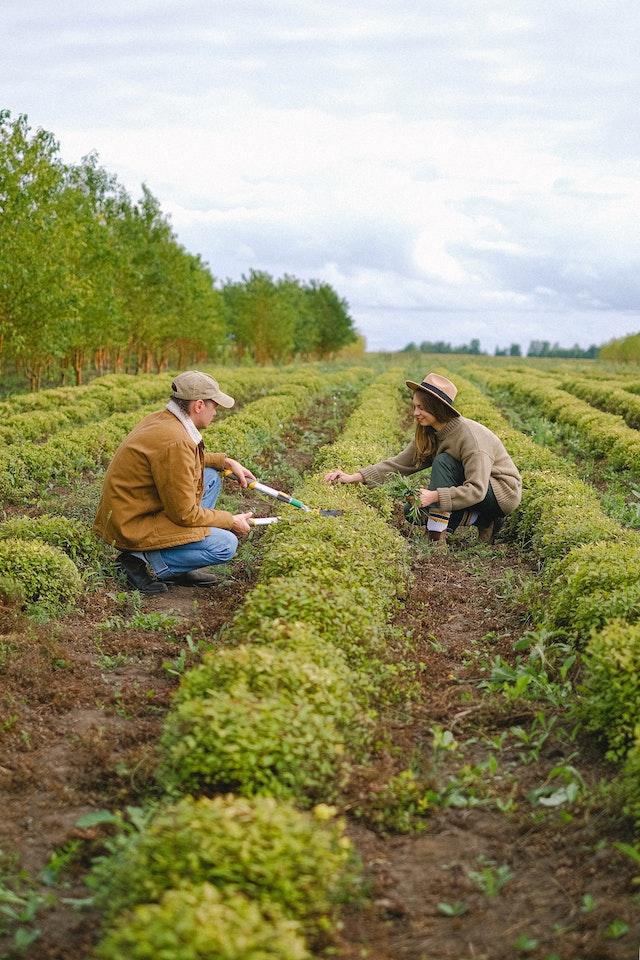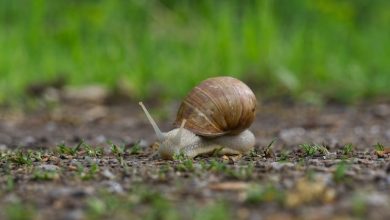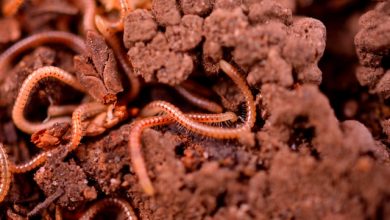
Pros and Cons of Using a Weed Guard Fabric in Your Organic Garden
Organic gardening has become increasingly popular in recent years because of the growing awareness of the importance of sustainable living. Organic gardening is a method of growing plants using natural sources of nutrients and pest control instead of synthetic chemicals.
Maintaining a garden can be a daunting task, especially when it comes to preventing weeds from invading your plants’ space. Weeds not only compete for nutrients and water but can also damage the plants, resulting in stunted growth and reduced yield.
One solution to keeping your garden weed-free is using a weed guard fabric. However, before deciding on whether to use a weed guard fabric or not, it’s essential to understand the pros and cons that come with this gardening method.
Pros of Using a Weed Guard Fabric
A. Reduces weed growth
- Weeds can cause major problems in your garden. They can choke out your plants, deplete the soil of essential nutrients, and create an environment for pests to thrive. Fortunately, a weed guard fabric can help address these concerns by blocking weeds and preventing them from growing. Weed guard fabric acts as a natural barrier that prevents weed seeds from germinating. It is an excellent way to keep your garden weed-free without the use of chemicals.
B. Helps retain soil moisture
- Retaining soil moisture is critical for organic gardening. Dry soil can be a significant issue for your garden, particularly if you live in a dry region or during the dry season. A weed guard fabric can help retain soil moisture by preventing the sun from evaporating water from the soil. The fabric also promotes better water penetration into the soil, reducing the need for frequent watering.
C. Provides a barrier against pests
- Garden pests can cause a lot of harm to your plants. When you use a weed guard fabric, you create a physical barrier that can prevent pests from accessing your plants. You are less likely to experience pest infestations because the fabric creates a more difficult environment for pests to thrive.
D. Improves soil health
- The soil is the foundation of your garden. A healthy soil environment is essential for growing strong, healthy plants. A weed guard fabric can help improve soil health by preventing the soil from becoming compacted. The fabric allows for better aeration and soil structure, essential for growing strong roots.
E. Reduced Soil Erosion
- A weed guard fabric can help to prevent soil erosion due to heavy rain or wind. The fabric acts as a protective layer that holds the soil in place and keeps it from being washed away. By reducing soil erosion, you can protect your plants’ roots and preserve the structure of your garden bed.
F. Saves time and energy
- Organic gardening requires a lot of time and effort. Weeding can be an incredibly time-consuming process. A weed guard fabric can help you save time and energy by reducing the need for frequent weeding. The fabric also helps reduce the need for watering, saving you time spent on watering your garden.
Cons of Using a Weed Guard Fabric
A. Limited Air and Water Permeability

- One of the primary drawbacks of using a weed guard fabric is its limited air and water permeability. While the fabric does help to retain moisture in the soil, it may also restrict airflow, which can be detrimental to the plants’ health. Additionally, limited water penetration can lead to pooling of water on top of the fabric, resulting in oxygen deficiency that can harm the plants’ roots.
B. Blocks Essential Nutrients
- Weed guard fabrics can prevent essential nutrients from reaching the soil. The fabric blocks the natural decomposition of organic matter, which is crucial for maintaining soil health. Without the decomposition process, valuable nutrients like nitrogen, phosphorus, and potassium may not be delivered to the plants as they should, ultimately causing the plants to become weak and malnourished.
C. Soil Temperature
- Weed guard fabrics can affect the temperature of the soil, leading to either excessive heating or cooling. During hot weather conditions, the fabric can trap in too much heat, leading to soil overheating, which can damage the plants’ roots. In cold weather conditions, the fabric can keep the soil too cool, slowing down the plants’ growth and development.
D. Can Lead to Soil Compaction
- Using weed guard fabrics can also lead to soil compaction. The constant pressure of the fabric on the soil can cause the soil to become denser, making it harder for the roots of plants to penetrate and grow. This can stunt the growth of plants and reduce their yield over time.
E. Limits Planting Options
- Weed guard fabrics limit planting options. You cannot simply cut holes in the fabric to plant your crops since it is not biodegradable. While some weed guard fabrics come with pre-cut holes, this can still limit the types of plants you can grow in your garden.
F. Affects Biodiversity
- Weed guard fabrics can also negatively affect biodiversity in your garden. The fabric can prevent insects and microorganisms from breaking down organic matter and create a healthy environment for plant growth. Furthermore, the use of weed guard fabrics can lead to the survival of only a few plant species, thus limiting the diversity of plant life in your garden.
G. Maintenance
- While using a weed guard fabric reduces the amount of time spent weeding, it doesn’t eliminate it entirely. Weeds may still grow on top of the fabric, and they need to be removed to prevent them from becoming a problem later on. Additionally, the fabric may require occasional cleaning to remove debris that may accumulate on its surface.
H. Can Be Expensive
- Finally, the cost of weed guard fabrics can quickly add up. Not only do you have to consider the cost of the fabric itself, but also the additional costs of installation, maintenance, and removal. This can be quite an investment for an organic gardener, especially when there are alternatives that are more cost-effective and environmentally friendly.
Alternatives to Weed Guard Fabric
When it comes to organic gardening, weed control can be a challenging task. While weed guard fabric is a popular option, it may not necessarily be the best fit for your garden. Fortunately, there are several alternatives to weed guard fabric that can be just as effective without harming the environment.
Mulching:
Mulching is a popular alternative to weed guard fabric because it is easy to apply and can be very effective. Mulch is a layer of organic materials such as leaves, grass clippings, or wood chips that are placed on top of the soil to suppress weed growth and retain moisture.
Cover crops:
Cover crops are an excellent alternative to weed guard fabric because they offer many benefits beyond weed control. Cover crops are planted between growing seasons to help improve soil health, reduce erosion, and provide additional sources of organic matter.
Hand weeding:
While it may not be the most desirable option, hand weeding is an effective way to control weeds in an organic garden. Hand weeding involves removing weeds by hand, which can be time-consuming but allows for a more precise approach to weed control.
Crop rotation:
Crop rotation is another alternative to weed guard fabric that can be particularly effective in reducing weed pressure. By rotating crops, you can break the lifecycle of weeds and pests that may be specific to certain types of plants.
Overall, there are many alternatives to weed guard fabric when it comes to organic gardening. By implementing mulching, cover crops, hand weeding, or crop rotation in your garden, you can achieve effective weed control without the use of harmful chemicals.
Conclusion
There are several pros and cons to using a weed guard fabric in your organic garden. It suppresses weeds, increases moisture retention, reduces soil erosion, and protects against pests. However, it also has limited air and water permeability, can affect soil temperature, is expensive, and requires maintenance.
As an organic gardener, it is essential to consider these factors before deciding on whether to use a weed guard fabric or not. Overall, a weed guard fabric can be a great addition to your gardening arsenal, but it’s important to weigh the pros and cons before making a decision.
FAQ

What is weed guard fabric and how does it work in an organic garden?
- Weed guard fabric is a protective covering laid over soil that helps prevent the growth of weeds in your garden. It works by blocking sunlight from penetrating the soil, which in turn, prevents weed seeds from germinating. The fabric is designed to allow water and air to pass through it, ensuring your plants get the necessary nutrients while minimizing the amount of weeding required.
Can you use weed guard fabric with any type of plant?
- Weed guard fabric can be used with various plants, including fruit trees, vegetables, flowers, and herbs. It is compatible with most traditional gardening methods such as raised beds, container gardening, and row crop planting.
Does weed guard fabric affect the soil quality?
- Weed guard fabric is designed to allow water and air to pass through it while preventing weeds from growing. Therefore, it does not affect soil quality. In fact, it can help to protect the soil from erosion and retain moisture levels.
Can weed guard fabric be reused from one season to the next?
- Yes, if the weed guard fabric is cleaned and stored properly after the growing season, it can be reused the following year. However, it may need to be replaced after several years of use.
How is weed guard fabric installed in an organic garden?
- Weed guard fabric can be easily installed by first preparing the soil, laying out the fabric on top of the soil, and cutting holes in the fabric to allow for planting. Once the fabric is in place, you can cover it with mulch or soil to help secure it in place.
Does weed guard fabric require maintenance?
- Weed guard fabric requires minimal maintenance, but it should be inspected regularly to ensure that it is holding up and not being damaged by weather or animals. Additionally, it should be cleared of any debris such as leaves, twigs, and rocks that can accumulate on top of it.
Can weed guard fabric be removed at any time during the growing season?
- Weed guard fabric can be removed at any time during the growing season if necessary. However, it is recommended to keep it in place until the end of the growing season to prevent weed growth. If you need to remove it, do so carefully, making sure not to damage any plants or soil.
Can you compost weed guard fabric?
- Weed guard fabric can be composted, but it may take longer than other organic materials to break down. It is recommended to cut it into small pieces before adding it to your compost pile.
Is weed guard fabric environmentally friendly?
- Yes, weed guard fabric is environmentally friendly and a sustainable alternative to chemical herbicides. It helps to promote healthy soil and plant growth, as well as reducing the need for other resources like water and fertilizer. By using weed guard fabric, you can help to support a healthy ecosystem in your garden and the wider environment.



